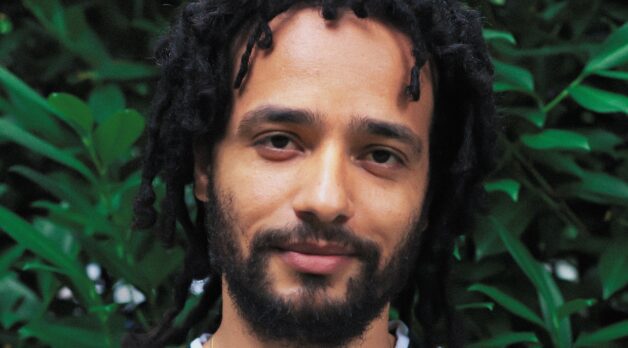Alex Ashe
 Alex Ashe
Alex Ashe

“Working your way up through the grip and electric department is, at times, a slower path to becoming a cinematographer,” says New York–based DP and director Alex Ashe as he recalls a decade working as an electric and gaffer on shorts, commercials and independent features, such as Where is Kyra? (2017). For Ashe, that meant “sitting on set with the film lighting technician’s handbook or other books on cinematography, trying to connect all of the dots. I’d ask the DPs what lenses they were shooting on and try to glean as much as I could about camera while I was working my way up.” Now that he’s shooting, though, Ashe is “grateful for the foundation that I have in light—it’s been instrumental in everything I’ve ever done.” That includes his acclaimed first feature as a cinematographer, Madeleine Hunt-Ehrlich’s The Ballad of Suzanne Césaire, which plays the at New York Film Festival this fall, and a second feature in the can.
Ashe grew up with cinephile parents but truly came of age “in the Netflix DVD era,” when his taste grew to include both Hollywood blockbusters and international cinema like The Battle of Algiers. Attending Brown University as an undergraduate, he majored in Modern Culture and Media, which is “a very theory-intensive program,” he says. “There was a big emphasis on how films and visual media are not politically neutral. Learning to question the perspectives and ideologies behind the images we consume was significant for me and only deepened with my experiences in the Africana Studies department.”
Terence Nance’s HBO series Random Acts of Flyness was Ashe’s last work as a gaffer; after, he began shooting interviews, including Chris Rock’s, for Summer of Soul. His first collaboration with Hunt-Ehrlich, her short Conspiracy, was “the most high-stakes film exposure situation I’ve ever been in.” The short involved shooting the burning of a Simone Leigh sculpture worth in the six figures. “I had one chance to get the exposure right,” he says. “I had shot a bunch of tests beforehand, but I was still sweating it during that take. Thankfully, it worked out.” The collaboration led to Ashe shooting Hunt-Ehrlich’s 16mm feature, about feminist writer, activist and surrealist Suzanne Césaire. Since 90 percent of the film is day exteriors, the Florida sun was the feature’s big technical challenge. Ashe pulled all of the day footage two stops and shot with sharper glass to tighten the grain and get closer to a 35mm look. As Ashe shoots more, he finds himself leaning into simplicity. Many of his favorite scenes “were done in a more minimalist approach—not, you know, lighting 10 city blocks with bright blue moonlight that’s two stops overexposed.” That ethos served him well on Ira Sachs’s forthcoming “intimate” biopic of photographer Peter Hujar. With much of the film set in Hujar’s apartment, “one of the things Ira and I discussed was making the passage of time and the changing of the light over the course of the day part of the narrative.”
Ashe credits his directors so far as being great collaborators who have encouraged him to bring his own sensibilities to the work. Ultimately, though, as a DP, “you must always prioritize the director’s vision. Directing my own work is a great way for me to explore my personal ideas and visual language without imposing on anyone else’s creativity.” Ashe has now directed two shorts; the second, Magic Ring (2022), played the New York Film Festival. It’s a moving and ambitious work whose images spring from the consciousness of a man bleeding out after a police shooting. Beginning with a rooftop chase, the short gearshifts “into a more mysterious slow cinema language. A lot of my influences, from African cinema to Antonioni, are at play.”
Currently at work on a feature screenplay, Ashe doesn’t intend to stop shooting but wants to be intentional about the jobs he takes. “Filmmaking is hard, and to maintain will and energy you have to really care about what you’re doing. That’s something that has only been reinforced by my collaborations with Madeleine and Ira and some other great directors I’ve gotten to work with—they really care about the films they’re making. That’s something I always try for, whether I’m a DP or a director: to really be invested in the work.”—Scott Macaulay/Image: Landan Osman
